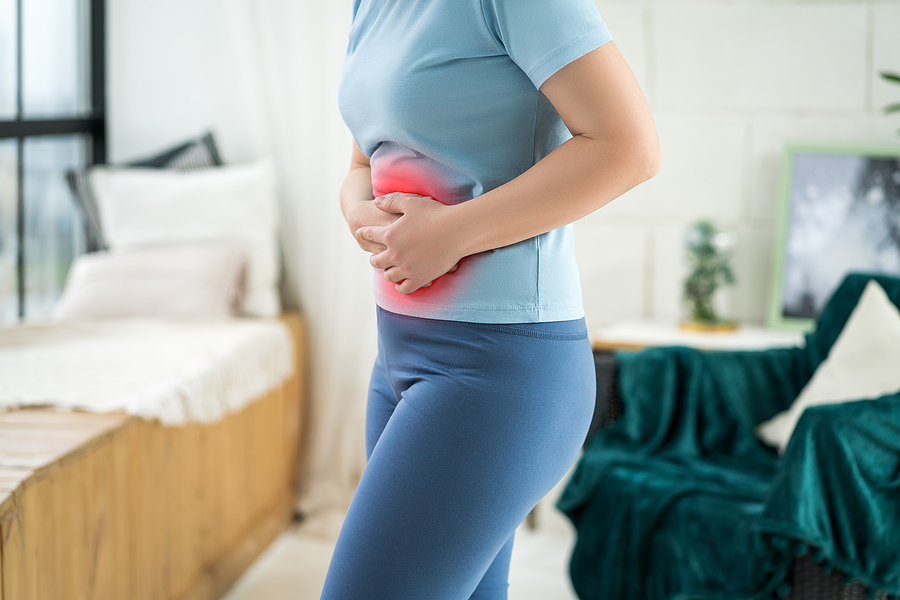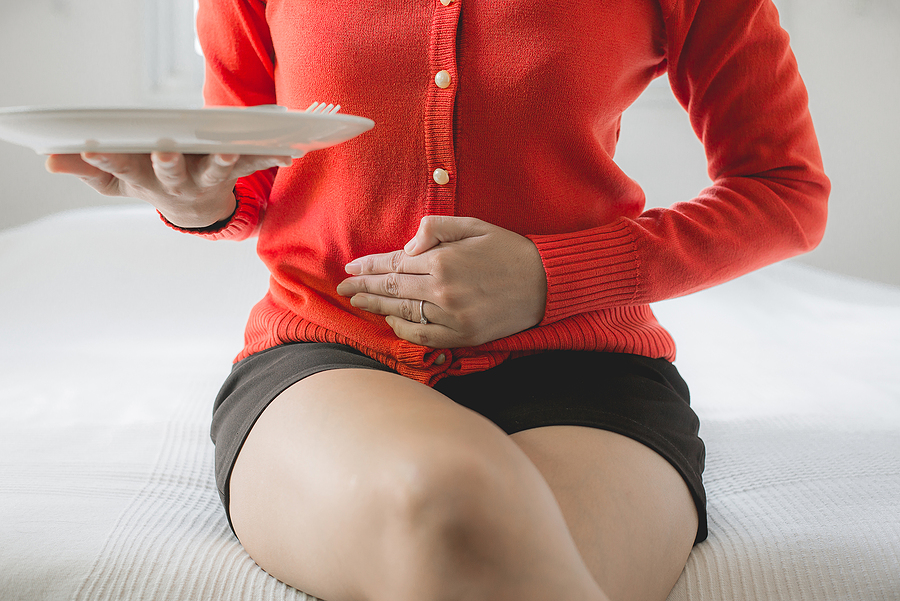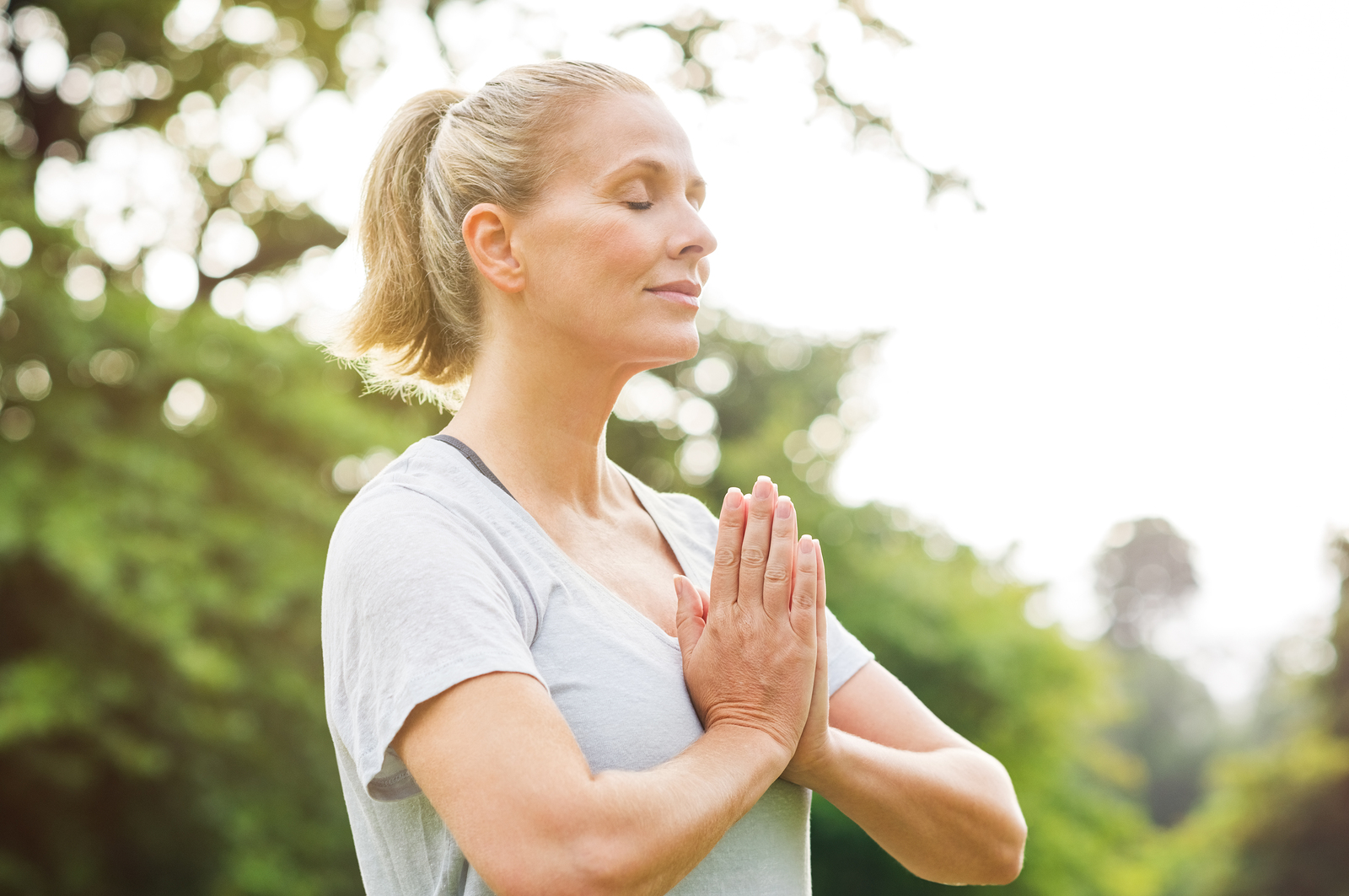Updated: 9/01/19
I haven’t yet met a woman who hasn’t heard of premenstrual syndrome (PMS). Every woman I talk to has some kind of experience with symptoms related to her menstrual cycle. Too many of them also say they don’t think there’s a solution – it’s something that “part of being a woman”.
I hear it all the time, this assumption that PMS is something women just have to learn to live with. Even those who suffer from severe symptoms often think there’s nothing they can do about it – and no one has ever told them otherwise!
In fact, the media perpetuates this myth, with a plethora of jokes about PMS on television and in movies, and articles or news stories that talk about what PMS is, but don’t give a lot of practical advice about what to do about it, other than pharmaceutical options.
Anyone who has suffered through PMS symptoms knows they’re no laughing matter. Women deserve to be taken seriously, and offered solutions beyond drugs. And there ARE natural solutions!
Jenny’s Story
Jenny came to see me after her annual physical one year, when the practitioner she used to see dismissed her concerns around her PMS symptoms. When Jenny asked about the intense monthly mood swings she experienced, for example, her practitioner told her “you work too much.” While that may have been true, it didn’t offer Jenny any real solution to her problem.
When Jenny and I talked, I took the time necessary to review her lifestyle and nutrition, and she began to see the connection between her symptoms, stress, and her diet. I suggested some small changes to start – eliminating soda from her daily routine and replacing it with water, taking a multivitamin daily, exercising for 10 minutes and stretching daily. She committed to trying them, and they worked!
Although these small shifts didn’t make Jenny stress-free immediately (and in our modern world, stress free is an elusive goal), she found that they helped her cope much better. In fact, she saw so much positive improvement that she began to commit to much larger dietary and lifestyle changes.
I know that each one of you is capable of making these kinds of beneficial changes too – starting today! Let’s take a look at some of the most common PMS symptoms, what might be causing these, and then I’ll give you five tips for finding relief naturally.
What is PMS?
There aren’t specific lab tests or other physical guidelines for diagnosing PMS. But your health care practitioner may consider PMS if you experience the same symptoms repeatedly during your monthly cycle.
The truth is, most women know what PMS feels like, and they usually don’t bother going to the doctor when they experience symptoms like bloating and pain in the abdominal area, fatigue, mood swings, headaches, food cravings, and tender breasts. That’s because our society has trained us to think that PMS is a normal, unavoidable part of being a woman. That’s simply not true!
What is true is that a significant number – nearly 90 percent – of menstruating women are impacted by some aspect of PMS. Symptoms typically begin five to 11 days before menstruation and subside once it begins.
Most of these symptoms are mild to moderate, and don’t affect daily functioning. However, nearly a third of women report moderate to severe symptoms that impact some aspect of their daily life.
Some symptoms, like those I mentioned above, are very commonly associated with PMS. But what many women don’t realize is the myriad other symptoms that may be attributed to PMS. These include acne, constipation, diarrhea, sensitivity to light or sound, changes to sleep, anxiety, and depression.
Any symptom that impacts your daily life and is only present in the time between ovulation and menses could be attributed to PMS. An official diagnosis is typically made when you have more than one symptom that occurs repeatedly in that time frame and is intense enough to cause disruption to your daily activities.
It’s important to see a healthcare professional when you are suffering from severe symptoms, to rule out other causes, including anemia, IBS, thyroid disease, endometriosis, and other chronic conditions.
What Causes PMS?
There is no clear answer to this question, but research suggests that there is a connection to changes in both sex hormones and serotonin levels when the menstrual cycle begins.
Estrogen and progesterone naturally increase at specific times of the month. This increase can cause irritability, anxiety and mood swings. Serotonin also impacts mood.
There are a number of identified risk factors for PMS, including family history of PMS or depression; a personal history of mood disorders; domestic violence; substance abuse; and physical or emotional trauma.
Many other conditions are associated with PMS, including major depressive disorder, dysmenorrhea (absence of menses), schizophrenia, seasonal affective disorder, and generalized anxiety disorder.
Hormonal imbalances are behind so many of the symptoms women come to see me about, which is why my first course of action is to suggest natural treatments that help balance hormones naturally. Below are five tips to balance hormones and relieve your PMS symptoms without a prescription.
6 Tips to Get Natural Relief for PMS Symptoms
Although symptoms may only show up at specific times of the month, my patients have found the most success in their PMS symptoms when they make changes to eat a more healthy diet and make lifestyle changes that become regular patterns. That means not waiting to try these tips until PMS symptoms show up — make them a habit every day!
1. Make Some Simple Dietary Changes
The food choices you make every day are a large influence on the balance of hormones, especially those that fluctuate naturally during PMS. Eating a healthy diet on an ongoing basis helps stabilize blood sugar and insulin levels.
A simple way to begin is to eat meals on a regular schedule, along with a couple of snacks, to keep your blood sugar steady and avoid cravings.
Pay attention to protein – having some with each meal helps! Decreasing your carbohydrate load, and avoiding high-fructose corn syrup and sugar-rich items will also make a big difference.
Little changes – like Jenny’s resolve to replace soda with water – go a long way!
2. Make Lifestyle Changes That Support Your Body
It is essential that you take care of yourself. Stress is probably one of the biggest contributors to the PMS symptoms you experience. When you learn to stop and make sure you have what you need, you can find relief from these uncomfortable symptoms.
Begin to practice meditation, yoga, or any activity that calms your mind and helps you focus inward. Having an exercise routine can also help – but if you are overstressed already, avoid the intense workouts in favor of a more gentle routine, at least to start. This self-care is important all the time, but can be essential when you are premenstrual.
I’m a big Pilate’s advocate, and I love ballroom dancing as a way to destress and find joy. But what works for me may not work for you. Choose whatever appeals to you to clear your head, get your heart pumping, and focus on your breathing.
Some people like to exercise and socialize at the same time. Others prefer a solitary practice. There’s no wrong choice here, as long as you truly love what you’re doing. If you don’t love it, you likely won’t do it!
3. Make Sure Your Body Gets Enough Nutrients
This isn’t the same as eating healthy food. There’s a lot of buzz around eating healthier these days, and that’s a good thing! Unfortunately, no matter how healthy you eat, it’s difficult to get all the nutrients you need in the amounts your body needs. That’s why I suggest supplementing, based on your individual needs.
Medical-grade, also known as pharmaceutical grade, nutritional supplements ensure that your body will get the specific nutrition that it needs—at the exact time it needs it. This is really important when your hormones fluctuate during the month.
I recommend that all women take a daily multivitamin, and consider EPA/DHA (essential fatty acid) support as well. In times of great stress, supplements targeted to support your adrenal glands can also be very helpful. If your hormones are imbalanced, there’s a range of options that can offer exactly the support you need for your body.
4. Consider Herbal Support
There are natural herbal remedies that can reduce and prevent your PMS symptoms. These offer targeted support to help your body meet the demands you place on it every day. Adaptogenic herbs are especially helpful, since your body uses only what it needs for hormonal balance. Some especially helpful herbal remedies include chasteberry, dong quai, black cohosh, maca, lemon balm, burdock, wild yam, St. John’s wort, and ginkgo biloba.
5. Get Plenty of Quality Sleep
A conversation about supporting your body naturally wouldn’t be complete without mentioning sleep. Insomnia and sleep difficulties often get worse with PMS. Making sure you have a good sleep routine all the time can help keep your body relaxed and ready for peaceful slumber.
Set a routine that works for you and follow it every night. Try to go to bed and wake up on the same schedule every day, even on weekends. Create a cool, soothing environment for sleep – and leave the electronics out of the bedroom!
6. Add Progesterone If Needed
Another game changer for some that have low progesterone in the second half of their cycle is to add micronized progesterone in the form of a cream, troche or melt, days 12 to 14 until the menses start. You will need to see a functional medicine practitioner to prescribe this for you. But when you have tried all the other recommendations, and nothing has worked this may make a huge difference. You do not have to suffer from any form or PMS.
You Can Control PMS Instead of Letting It Control You
There’s no need to dread several days in each month due to symptoms that derail daily life. And you certainly don’t have to learn to live with these symptoms – they are not beyond your control! Being aware of the lifestyle choices you make all month long can go a long way towards making that particular time of month more pleasant. Start with just a couple of small changes, like Jenny did. I’m willing to bet that once you realize how good you can feel, you’ll be ready to take even bigger steps. Your health is in your hands!
Resources:
https://www.healthline.com/health/premenstrual-syndrome
https://www.womenshealth.gov/menstrual-cycle/premenstrual-syndrome#13







